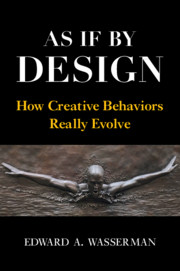Book contents
- As If By Design
- As If By Design
- Copyright page
- Dedication
- Contents
- Figures
- Acknowledgments
- Section 1 Introduction
- Section 2 The Vignettes
- Part I Sports
- Part II Medicine
- Part III Hygiene
- Part IV Arts, Entertainment, and Culture
- 16 Ansel Adams
- 17 Basil Twist: “Genius” Puppeteer
- 18 Moonwalking: And More Mundane Modes of Moving
- 19 Play on Words
- 20 Cuatro Festivales Españoles
- 21 Tchaikovsky
- 22 The Evolution of the Violin
- Part V Is This Heaven? No, It’s Iowa!
- Section 3 Putting It Together
- Index
- References
16 - Ansel Adams
Art for Art’s Sake?
from Part IV - Arts, Entertainment, and Culture
Published online by Cambridge University Press: 01 July 2021
- As If By Design
- As If By Design
- Copyright page
- Dedication
- Contents
- Figures
- Acknowledgments
- Section 1 Introduction
- Section 2 The Vignettes
- Part I Sports
- Part II Medicine
- Part III Hygiene
- Part IV Arts, Entertainment, and Culture
- 16 Ansel Adams
- 17 Basil Twist: “Genius” Puppeteer
- 18 Moonwalking: And More Mundane Modes of Moving
- 19 Play on Words
- 20 Cuatro Festivales Españoles
- 21 Tchaikovsky
- 22 The Evolution of the Violin
- Part V Is This Heaven? No, It’s Iowa!
- Section 3 Putting It Together
- Index
- References
Summary
Why do men go to such trouble to shave off their facial hair? A man’s beard represents an especially salient secondary sexual characteristic: a physical feature that develops at puberty and distinguishes men from women. In nature, such sexual dimorphism has been believed, since Charles Darwin, to participate in so-called sexual selection – females choosing the fittest males based on such characteristics. Thus, according to Darwin’s account, a lion cropping his mane would be tantamount to committing evolutionary suicide. But, that’s exactly what human males do. Why and when they do so raises interesting questions concerning the origins of shaving equipment and technique as well as the changing tastes of both women and men. Cultural change can be a matter of both function and fancy; such change can even trump the physical results of nature itself.
Keywords
- Type
- Chapter
- Information
- As If By DesignHow Creative Behaviors Really Evolve, pp. 173 - 191Publisher: Cambridge University PressPrint publication year: 2021

